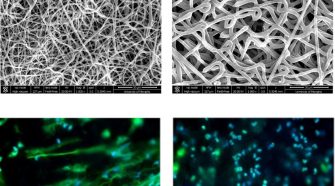Hot Topics

Student Spotlight: Electrospun biomaterials
Allison Fetz is pursuing a Ph.D. in Biomedical Engineering at the University of Memphis, where she is conducting research on electrospun biomaterials within the Tissue Template Engineering and Regeneration Laboratory, …

The plastics industry – committed to change or defending the status quo?
The year 2018 can be considered an annus horribilis for plastics, including synthetic polymer and fiber-based products that rely on such materials. The issue of microplastics in the oceans generated …

The plastics problem – a roundtable discussion
One of the most exciting areas of development in the fiber industry going forward figures to be in identifying solutions to minimize the environmental impact of nonwovens, technical textiles and …

The future of the ‘Forever Molecule’
The history and evolution of “the forever molecule” is both revolutionary and fortuitous. Polytetrafluoroethylene, or PTFE, was discovered completely by accident on April 6th, 1938 by a DuPont Chemist, Dr. Roy Plunkett, while he was conducting research on chlorofluorocarbon refrigerants. Its first broad commercial use was non-stick cookware in 1960. PTFE has since evolved and is utilized in an extensive array of products that take advantage of its unique properties.

Market trends in fiber import-export countries worldwide
Most of the top-10 exporting countries lifted their shipments in value terms in 2018 (Figure 1). The recovery of Chinese exports continued with the total value increasing 4 percent to US $277 billion. However, value-added garment exports remain about 15 percent below their peak 2014 level, without any significant movement over the past three years. Knitwear and woven apparel exports remain among the top-10 Chinese export categories, albeit gradually losing weight as the Chinese economy continues to diversify.

